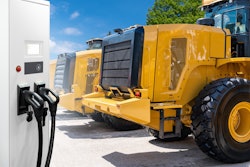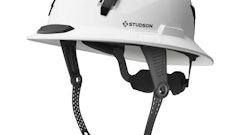
Many electric utilities have published very aggressive sustainability goals trying to achieve full electrification across all fleet categories over the next 10 to 15 years. With many bucket trucks having a seven to 10-year fleet life, we may already be behind and too late to achieve that goal. It is important to get started and be involved as EV adoption expands to medium- and heavy-duty applications.
In a recent interview with Southern California Edison (SCE), Utility Expo staff asked Todd Carlson, SCE principal manager of Fleet Asset Management, for his insights on fleet electrification. He reported that SCE plans to have 90 percent of its light-duty vehicles electrified by the end of 2025 and 100 percent by 2030. That same year, they also expect to exceed 30 percent of their medium-duty and 10 percent of their heavy-duty vehicles.
Here are few insights that utilities may find useful as they seek to transform their fleets.
Seek Assistance from Industry Groups
SCE partnered with other members of the Edison Electric Institute and sought out resources from the American Association of Public Power and the Green Truck Association as another source. While membership is geared toward manufacturers, the organization provides information on available green vehicles and sustainable technologies for work trucks.
Utilities should also consider their original equipment manufacturers and suppliers as a valuable resource.
Create a Road Map
SCE used a telematics fleet assessment to outline vehicles targeted to be replaced by EVs, where they park and how long they have to charge. This was used to calculate the charger size required at each facility by year.
They collaborated with their facilities team on a construction plan to install the infrastructure and chargers needed for the next five to 15 years at each site. Each site has its own project plan.
Once you have a road map, it’s important to work together with your supplier to match your goals with equipment that helps you achieve those goals. As charging infrastructure expands and industry standards develop, we encourage customers to use OEMs as a resource. Because of compatibility issues, it’s not as easy as just plugging into a Tesla charger.
Be sure to know your application—your routes, duty cycles, shifts and recharging times, and know that this is not yet ready for storm response.
Prepare a Business Case for EVs
Beyond meeting air quality and carbon emission goals, a strong business case can help utilities build consensus and commitment to change. At SCE, the business case for electric pickups and ePTO bucket trucks is supported by the high cost of gasoline and diesel fuel in California.
In addition, expect lower maintenance costs to be part of the value proposition for electric vehicles. SCE reported that its EVs that replaced gas vehicles have had very favorable maintenance outcomes, as have their traditional hybrid vehicles over the last 10 years.
No engine idling also means reduced worker exposure to exhaust. Reduction of noise pollution is important for working quietly in customer neighborhoods but has also improved communication during training so that the instructor can be up in the air providing instruction while also having a conversation with the students on the ground without trying to yell over the diesel motor.
Take Driver Opinions into Account
Give team members an option to try the equipment without locking them into using that vehicle long term.
Survey your current drivers to assess if they are excited, neutral or opposed to replacing their fleet vehicle with an EV. One suggestion is to ask your drivers if they own an EV or if they have ever driven an EV for context as a starting point for organizational change management. They have found that EVs often sell themselves because drivers like the quiet operation and reduced job site emissions once they’ve given them a try.


















